Whole30 Diet Rules are the first thing you should consider before deciding if you are up to the challenge of eating anti-inflammatory foods for the next 30 days of your life.

Jump to:
- What is Whole30?
- Benefits of Whole30 Diet Rules
- Whole30 Diet Pros and Cons
- Foods to avoid on the Whole30 Diet
- Counting Calories on Whole30 Diet Plan
- Don't wait! Get your FREE eBook Now!
- Don't Get FOMO!
- Can I lose Weight on Whole30?
- Does Whole30 Have Any Side Effects?
- How to Survive the Whole30 Rules
- The Whole30 Diet Pancake Rule (SWYPO)
- Exercising on Whole30
- Whole30 Diet Rules Re-Introduction Plan
- Whole30 Food Freedom
- Whole30 Support Groups
- Whole30 Recipes
- More Whole30 Diet Recipes You'll Fall in Love With
- Comments
What is Whole30?
Whole30 is not a diet in the sense of "loosing weight." The Whole30 program emphasizes whole, unprocessed foods while eliminating all grains, dairy, legumes, added sugars, and processed foods. The Whole30 diet aims to reset your eating habits and improve your overall health and well-being by focusing on nutrient-dense, anti-inflammatory foods.
Whole30 diet rules (although technically not referred to as a diet) focuses on an individual's relationship with food. Melissa Hartwig Urban developed the program and is the co-founder and CEO of Whole30.
Most recently, Whole30 has partnered with supermarkets like Thrive Market to develop and market Whole30 salad dressings and dips that are compatible with the anti inflammatory diet.
The Whole30 diet rules eliminates a series of foods that are said to cause inflammation in your body, which put you at risk for allergies, diabetes, high blood pressure, IBS among other things. Hence the program is not your typical diet but a food elimination diet that cleanses your body of inflammatory toxins caused by certain food groups for thirty days.
Following the thirty days, you being a Whole30 food introduction and monitor the foods that cause irritation and are not right for you.
The reason they call it Whole30 is that people follow this type of eating for a minimum of 30 days restricting specific foods.
Note that some people might need more than 30 days and to the Whole30 diet rules for 60 or 90 straight days. Some people adapt Whole30 eating as a lifestyle. However, many people don't feel that it is a sustainable lifestyle change as it is very restrictive.
Benefits of Whole30 Diet Rules
Many people turn to a Whole30 diet plan for the purpose of eating whole foods to change their relationship with food, loose weight, control diabetes and other cure other health issues, increase energy levels, and reduce inflammation in the body.
The following chart identifies the target goal out of 63 people surveyed on why they were interested in completing a round of Whole30.
| Concern | Responses | % |
| Change Relationship w/Food | 24 | 32% |
| Loose Weight | 18 | 29% |
| Control Health Issues | 14 | 22% |
| Increase Energy Levels | 6 | 9% |
| Control Diabetes Specifically | 1 | 2% |
| Total Surveyed | 63 | 100% |
Whole30 Diet Pros and Cons
Here are some pros and cons of the Whole30 Diet Program.
Pros
Eliminates processed foods: The Whole30 diet emphasizes whole, unprocessed foods, which can help you avoid added sugars, preservatives, and other unhealthy additives that are common in processed foods.
Encourages nutrient-dense foods: By focusing on nutrient-dense foods like vegetables, fruits, and healthy fats, the Whole30 diet can help ensure that you're getting all of the vitamins and minerals your body needs to function optimally.
Can improve digestive issues: Many people report improvements in their digestive symptoms while following the Whole30 diet, possibly due to the elimination of common gut irritants like gluten and dairy.
Can lead to weight loss: By cutting out processed foods and focusing on whole, nutrient-dense foods, the Whole30 diet may lead to weight loss for some individuals.
Promotes mindfulness: The strict rules of the Whole30 diet can encourage you to pay more attention to what you're eating and how it affects your body, which may promote mindfulness and healthy habits in the long term.
Can assist to find foods that adversely affect your health: by eating according to the Whole30 diet rules, you can find foods that adversely affect your health during re-introduction that can assist you to make informed decisions prior to consuming that food in the future.
Cons
Eliminates entire food groups: The Whole30 diet eliminates entire food groups like grains, legumes, and dairy, which can make it challenging to get all of the nutrients your body needs. This can be particularly problematic for vegetarians or vegans who rely on these food groups for protein.
Can be restrictive: The strict rules of the Whole30 diet can be difficult to follow for some people and may lead to feelings of deprivation or anxiety around food.
Requires planning and preparation: Following the Whole30 diet requires planning and preparation, as many convenience foods and snacks are off-limits. This can make it challenging to stick to the diet while on-the-go or without access to a kitchen.
May not be sustainable: While the Whole30 diet is intended to be followed for just 30 days, some people may find it difficult to reintroduce certain foods back into their diet without experiencing negative symptoms.
May not be necessary for everyone: While some people may benefit from the strict rules of the Whole30 diet, others may find that they can achieve similar health outcomes by making smaller, sustainable changes to their diet and lifestyle.
So what do you think? Only you can decide if it is worth going 30 days on a restrictive diet to find foods that adversely affect you.
Foods to avoid on the Whole30 Diet
People who follow the Whole30 diet rules are restricted from consuming:
- Added sugar, even artificial sugar
- Alcohol
- Grains
- Legume
- Dairy
- Baked goods, junk foods, or recreations of treats
- Carrageenan, Sulfites, MSG
This means that they cannot eat anything in the food groups above. So, in the morning when you are ready to have your cup of coffee or tea, you'll need to re-think whether you can drink it black and unsweetened. Of course, you can find non-dairy sweeteners, but let's face it, it's not the same.
Prepare by finding the Whole30 breakfast recipes and keep it simple. A lot of people eat oatmeal, a muffin, or a bagel for breakfast. Guess what? All of these are restricted. This makes breakfast one of the most difficult meals to plan for when prepping your meals.
To be successful at planning for breakfast, you need to think of breakfast as just another meal. When you start to think of breakfast as another meal, it opens up endless possibilities like having a salad, sausage or eggs.
Counting Calories on Whole30 Diet Plan
The great thing about the plan is that you don't count calories. Instead you follow a template eating 3 meals per day.
Snacking is discouraged unless you are exercising or nursing. If you exercise then you can have a mini meal for energy.
As part of the meal template you would fill your plate full of whole foods using your hand as a guide:
- Proteins - 1 to 2 palm size portions
- Veggies - ⅔s of your plate
- Fruit - fist size occasionally, being careful not to push vegetables off your plate
- Good Fat - every meal the size of your thumb
Many of the people surveyed indicated that they did not have a pre workout meal and just waited to have breakfast. Those that did have a pre workout meal had a banana and RXBAR and then ate when they returned from the gym or they had an entire meal pre workout as per the template.*
This page contains affiliate links, which means I may receive commissions if you choose to purchase through links I provide (at no extra cost to you). Thank you for supporting the work I put into this site! As an Amazon Associate I earn from qualifying purchases.
Don't Get FOMO!
Subscribe to get updates delivered right to your mailbox!
Yes! Send those updates to me.
Can I lose Weight on Whole30?
First, I want to say that Whole30 is not a diet and it was not intended as a weight loss program. Don't be surprised if you are not losing weight on Whole30. Many people participate in the Whole30 diet with the sole intent of loosing weight because they have heard that weight loss is one of the side effects of the program.
The unfortunate thing is that not all people who complete the program are actually successful at loosing weight. Which leads them to ask "why am I not loosing weight on Whole30?"
As part of the program you are not allowed to step on the scale for 30 days. This may be because people tend to gain weight or bloat in the first week while their bodies are detoxing. This water weight or bloat causes individuals to get disappointed quickly because they think they are gaining weight or that the program is not working for them.
Those that break the rules and do step on the scale, quickly get discouraged and quit before completing the 30 days. This is probably why it’s a rule not to step on the scale.
For those that do complete a round but don’t reap the benefits of weight loss, this might be because they averaged a calorie surplus, have sedentary lifestyle, have hormonal imbalances, be stressed or other reasons.
Keep in mind the Whole30 diet is not a weight loss program. The elimination diet helps you to find foods that cause inflammation in your body that cause unpleasant side effects.
I’m not a doctor, these are only some reasons that may not result in weight loss after completing a round. And, with any change in diet, always consult a physician.
Does Whole30 Have Any Side Effects?
Yes! There is a day by day timeline of how you are going to feel on approximately each day during the 30 days. For some people, the identified effects may come on an earlier day and for others come later. Some people never feel the identified symptom.
You can find the timeline here.
How to Survive the Whole30 Rules
If you want to be successful at doing the program then it will require you to clean out your cupboards. Toss out all that junk food or hide all the food that is restricted to avoid temptation.
Also, many people fail because they were never prepared in the first place. "When you fail to prepare - You prepare to fail".
Have recipes ready. Use Sunday as meal prep for the whole week and store your food in the fridge for lunches. Know exactly what you are going to prepare for dinners. Shop to ensure you have everything you need to prepare your meals. And most importantly - keep it simple.
Of 55 people surveyed, they indicated that the following items would have been good to know before they started a round:
| Item | Responses | % |
| Meal Prep is Essential | 21 | 38% |
| Meal Plan & Recipes to Go | 16 | 29% |
| List of Brand Name Pantry Items | 9 | 16% |
| Keep it simple or prep work will be overwhelming | 9 | 16% |
| Total Surveyed | 55 | 100% |
The Whole30 Diet Pancake Rule (SWYPO)
A lot of people don’t understand what SWYPO means. It stands for “Sex With Your Pants On”. That's probably why they rename the rule to "the pancake rule" and basically means that you are re-creating a non compliant baked good or treat with compliant ingredients. Because Whole30 focuses a lot on changing your relationship with food, the idea of re-creating a baked good, a pasta or a cereal for example are restricted and referred to back to “the pancake rule”.
Many people can't get over this and miss that pizza or cereal so much they attempt to re-create it with products that are compliant like chia seed pudding or pizza made with almond flour. Re-creating restricted foods with compliant ingredients is not permitted on a round, but it's ok for off-round eating which typically leads into a Paleo lifestyle.
Exercising on Whole30
It’s not necessary to exercise while doing Whole30 diet, but exercising is a healthy part of any lifestyle. Incorporated exercise is a great way to increase endorphins, increase cardiovascular health and tone your body. As well, exercise is a healthy way of maintaining mental health and de-stressing.
| Exercised While on Round | Responses | % |
| Yes | 81 | 61% |
| No | 26 | 20% |
| Sometimes | 26 | 20% |
| Total Surveyed | 133 | 100% |
Many of the people surveyed indicated that they did not have a pre workout meal and just waited to have breakfast. Those that did have a pre workout meal had a banana and RXBAR and then ate when they returned from the gym or they had their meal pre workout as per the template.
Whole30 Diet Rules Re-Introduction Plan
It doesn’t end once you have completed 30 days of the Whole30. There are 2 more phases, so to speak. Re-introduction is the first phase after completing a round.
The re-introduction phase is a really important phase. You start by introducing one of the restricted food groups that you eliminated while on Whole30 Diet Program. For example, you would re-introduce dairy products and then wait 3 to 5 days to see how your body reacts to the re-introduction of this food group. If all is fine, then you continue with introducing another food group like grains.
Some reactions people experience in re-introduction include: hives, headaches, stomach upset, inflammation, etc. If you do experience negative effects from re-introduction of a food group then you would make a decision on whether you can find a suitable substitute to replace that food or continue to eat it knowing that you will experience the negative effects.
You continue re-introducing food groups one at a time leaving days between food groups until you have re-introduced all that were eliminated while on round.
By the time you are done re-introducing all of the initially eliminated food groups you should have an idea of which foods have a negative effect on you.
| Food | Responses | % |
| Dairy | 47 | 37% |
| Bread | 29 | 23% |
| Sugar | 29 | 23% |
| Alcohol | 7 | 6% |
| Legumes | 7 | 6% |
| Rice | 5 | 3% |
| Soy | 4 | 2% |
| Total Surveyed | 127 | 100% |
Whole30 Food Freedom
The second phase that follows after completing a round of Whole30 refers to “food freedom”. Food freedom basically refers to one’s ability to adapt healthy eating habits from having completed a round. They say that it takes a person 30 days to form new habits. Maybe this is why the program is called Whole30. After 30 days of eating whole foods and eliminating those so called inflammatory foods, one develops a habit of choosing “healthier” foods, making “healthier” recipes, and ordering “healthier” take-out food.
In fact, many people adapt specific diets after they have finished a round of Whole30. Of 57 people surveyed, 14% indicated that they would adapt the Paleo diet. Others identified that they would continue to remain Whole30 compliant 80% of the time.
| Diet | Responses | % |
| Stay Compliant 80% (regular eating 20%) | 44 | 77% |
| Paleo | 8 | 14% |
| None | 5 | 9% |
| Total Surveyed | 57 | 100% |
Whole30 Support Groups
There is a lot of support for people who decide to do a round of Whole30. For starters, Melissa Hartwig Urban has a website dedicated to the program where you can find support, forums, podcasts, recipes and so much more.
For more information on Whole30, visit the site www.whole30.com.
If you are interested in doing a round of Whole30, this Whole30 starter kit is an essential resource. Get it here.
Additional PDF resources are here.
In addition to the official Whole30 website, there are many Facebook groups that offer support. The following group is one of the largest support groups and offers gentle support. If you are thinking of doing a round of Whole30, joining a support group is essential to success.
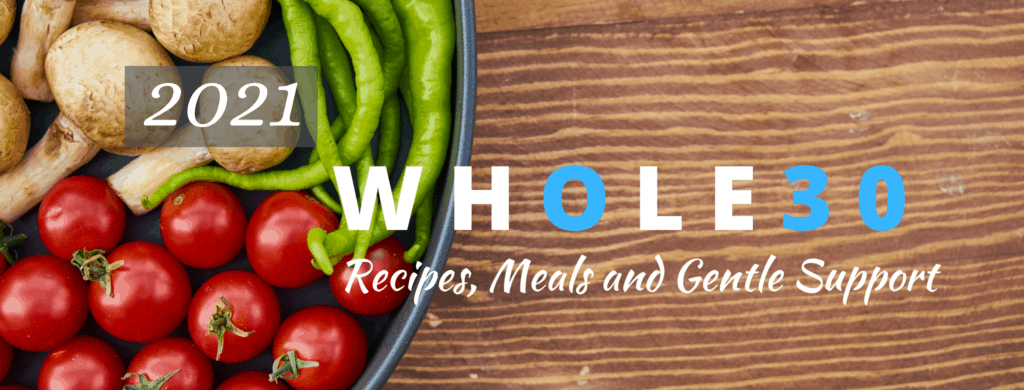
Whole30 Recipes
As someone who has personally completed Whole30, I’ve adapted some recipes on my website which would be compliant while doing a round.
Here are a few tasty Whole30 recipes:
- Whole30 Sheet Pan Dinners
- 5 Amazing Whole30 Breakfast Ideas
- Easy Bolognese Sauce
- Easy Roasted Butternut Squash Soup
- Orange Chicken Sheet Pan Dinner
- Whole30 Chai Tea Latte by Blissfull Eating
The following recipes, while compliant are technically referred to as restricted under the pancake rule. They should not be consumed while on round, but would be a perfectly healthy option when not on round.
- Chia Seed Breakfast Pudding
- Gluten Free Potato Pancakes with Poached Egg and Bacon by Alena at Bible of Taste



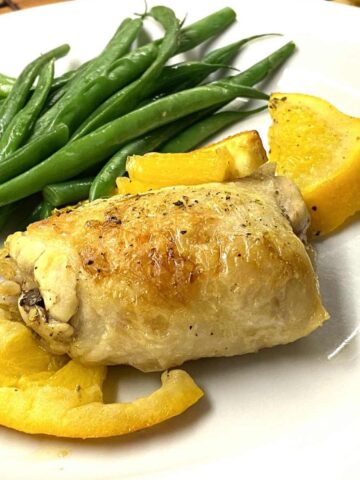
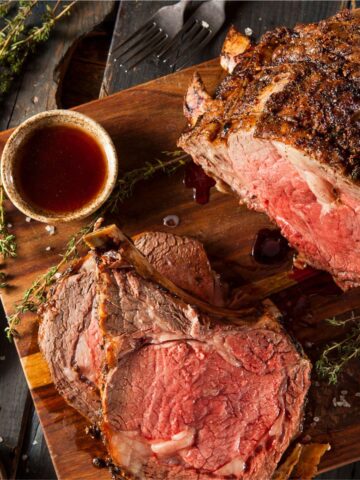

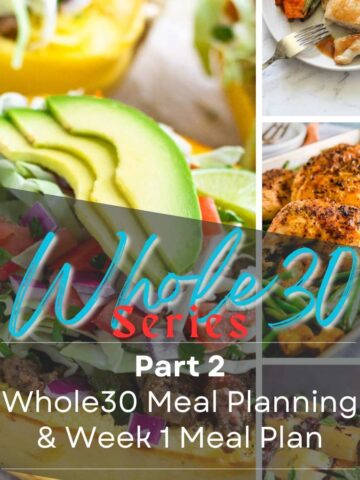


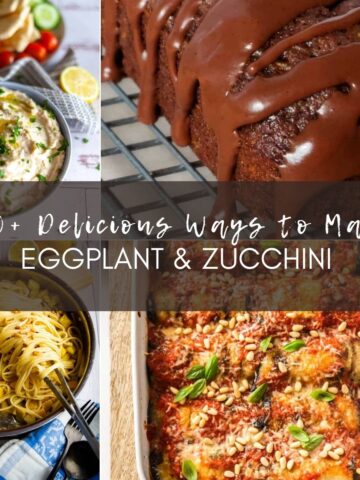
Janet says
Another great online marketplace that's opened is http://www.tinybodega.com. They focus on healthy foods and indie brands that are gluten-free and dairy-free!
AmyG says
Thank you for sharing Janet. The products on this website may be good in the "food freedom" stage. Whole30 is more about one's relationship with food, eating whole foods and eliminating inflammatory items such as beans and processed foods. It's more than being Paleo or gluten free.